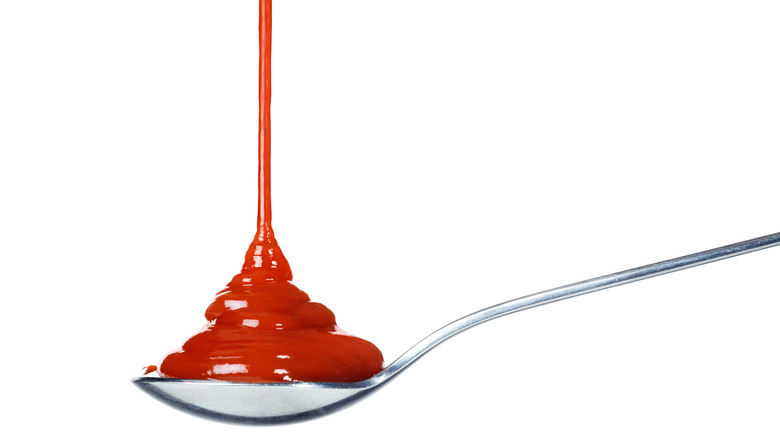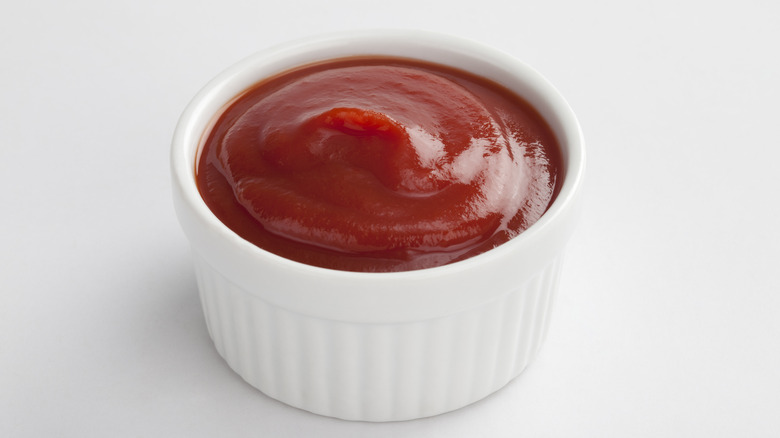What Is The Difference Between Catsup And Ketchup?
When thinking about catsup vs. ketchup, have you ever had a Mr. Burns moment, pondering the difference between them? Well, spoiler alert: They are one and the same. That's right, there is no difference between ketchup and catsup, save for the spelling on the bottle!
Technically, both words can apply to any sauce made from vinegar – and they are usually qualified with the main ingredient stated on the label, i.e., Heinz Tomato Ketchup. In recent years, the dictionary terms have adjusted to reflect that the primary ingredient in ketchup is tomato, though this was not always the case. Original iterations of the sauce featured ingredients like mushrooms and walnuts. Likewise, while ketchup is perhaps the quintessential American condiment, it's not originally from the United States.
Although ketchup seems like an all-American ingredient perfect for squirting on burgers, hot dogs, and fries, the origins of the beloved condiment are Chinese. Ke-tsiap was a sauce based on fermented fish, popular in 17th-century China; fish sauce came to them from Vietnam. British sailors got a taste for ke-tsiap in the 18th century and brought it back to England, where people began tinkering with it and trying to recreate it with common Western ingredients.
The history of ketchup
Andrew F. Smith wrote in "Pure Ketchup" that early recipes published in 18th-century Great Britain called for "kidney beans, mushrooms, anchovies, and walnuts." Then, the condiment spread to the American Colonies, where tomatoes were added. The first known recipe for tomato ketchup was devised by the American scientist and horticulturist James Mease and recorded in 1812; it contained brandy and spices along with tomato pulp, but no sugar or vinegar like the tomato ketchup we consume today.
The oldest Westernized spelling of the sauce name was "catchup," with the first citation appearing in 1690. "Ketchup" came next in 1711. Finally, "catsup" appeared in 1730. Ketchup giant Heinz originally went with catsup as the spelling for its product but changed it to the now-standard "ketchup" in the late 1880s to stand out from the competition, which used the then-current "catsup" variation.
However you spell it, aside from being a delicious condiment in its own right, it is also great for adding complex flavors to other dishes, such as to boost the tomato flavors of a hearty marinara sauce, a sweet and savory sauce for meatballs, or even in baked beans.

